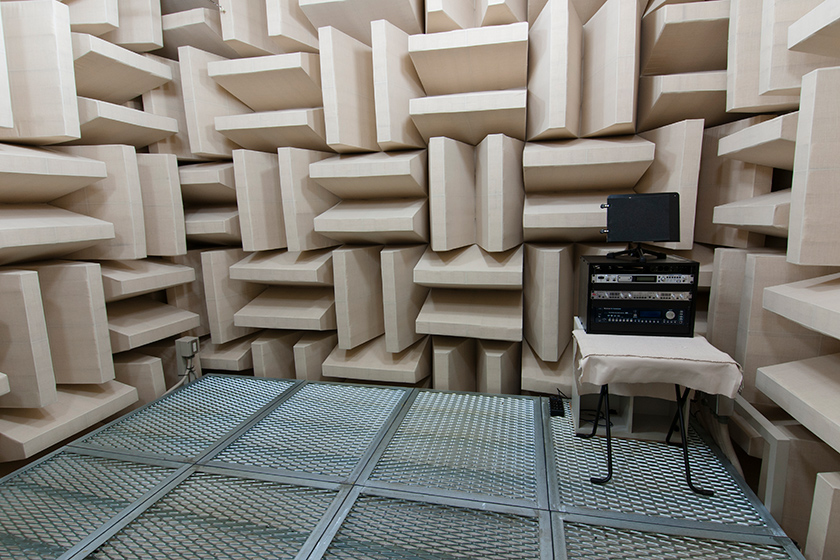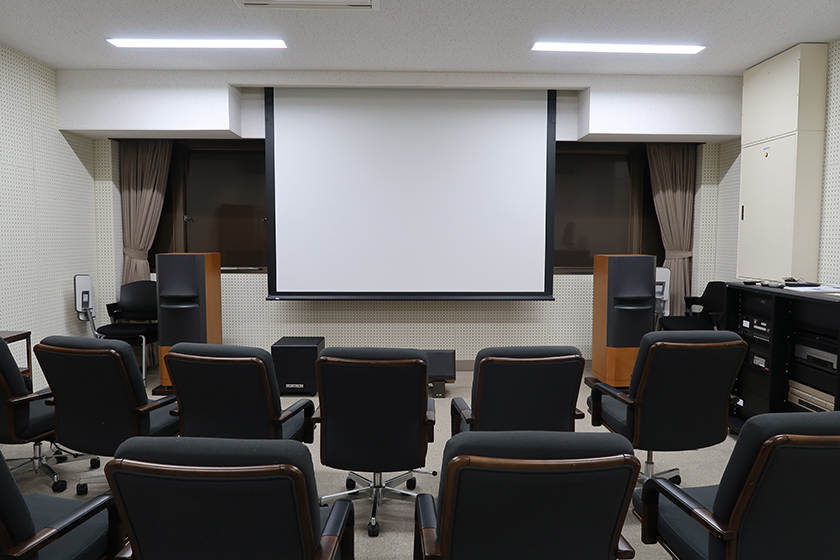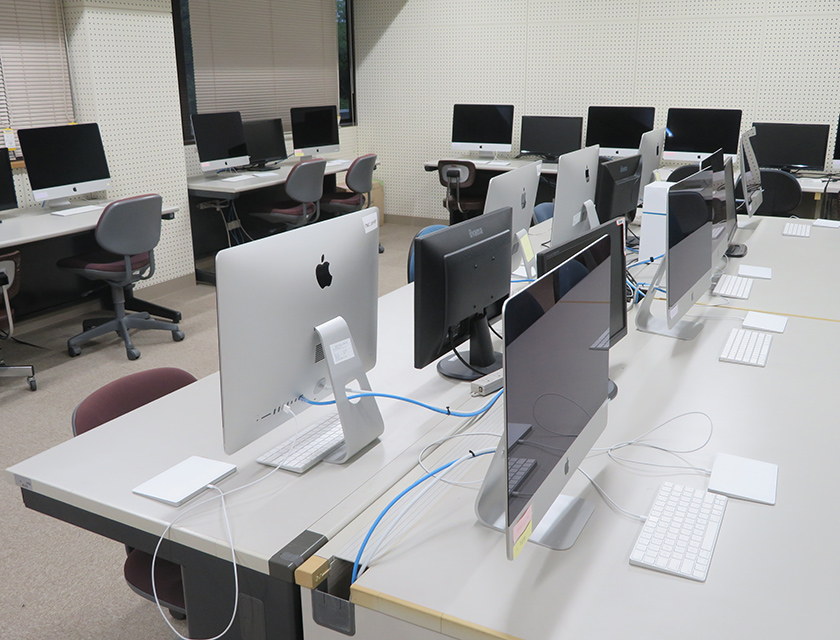The Advanced Visual Media Laboratory was established on the third floor of Language and Culture Building B in 1999, and it has mainly been used as a room for projecting video educational materials in the classes of the Department of Language and Culture. After receiving discretionary expenses from the university president in 2003, its basic capabilities were greatly improved along with the establishment of a digital environment, and the nickname of “Mini Cinema” was born. Due to the opening of the new “Advanced Visual Media Laboratory A (Mini Cinema A)” on the sixth floor of Building A in June of 2015, the name was changed to “Advanced Visual Media Laboratory B (Mini Cinema B).”
Although this is an era where it is easy to enjoy a home theater, and where classrooms with liquid crystal projectors are not uncommon, “Mini Cinema B” is unique in that it is equipped with facilities exclusively for projection. In this small classroom with a capacity of about 20 people, a screen brightness of 4500ANSI lumens and (for PC input) SXGA levels of resolution can be achieved on the screen. Centered on a main speaker with a 25cm double-woofer, the 5.1 channel audio system boasts a sound quality just like that of movie theaters. Aside from PCs, other sources can be exhibited and played, such as VHS (all regions), DVD (all regions), DVD-R/RAM, miniDV, and LD. Furthermore, it is also equipped with augmentability for the new media of the future. Operation through the system controller is simple, and anyone can operate it. Further, it is also possible for data from any source to be incorporated into a PC and freely edited and processed.
In the current “Mini Cinema B,” classes that use video such as introduction to foreign cultures, history of film and video, and discourse analysis as well as screenings have all been conducted. As video analysis through mechanical processing and presentation techniques using video develop further, it is certain that the importance of the role that audio-visual texts fulfill in research of language and culture will increase more and more. It is expected that now and in the future, “Mini Cinema B” will respond to such educational and research needs of the Department of Language and Culture.
Incidentally, some of the departmental budget and the discretionary expenses from the university president were used for the software aspect as well, and the archive of audio-visual materials such as DVDs have been substantially enhanced.




